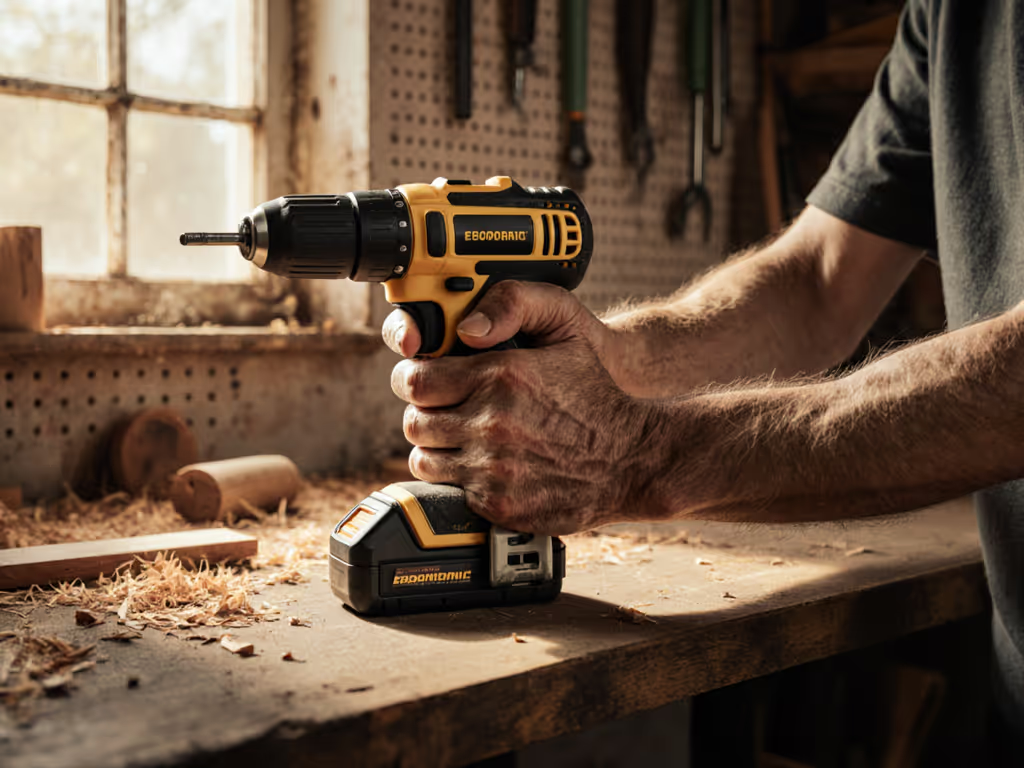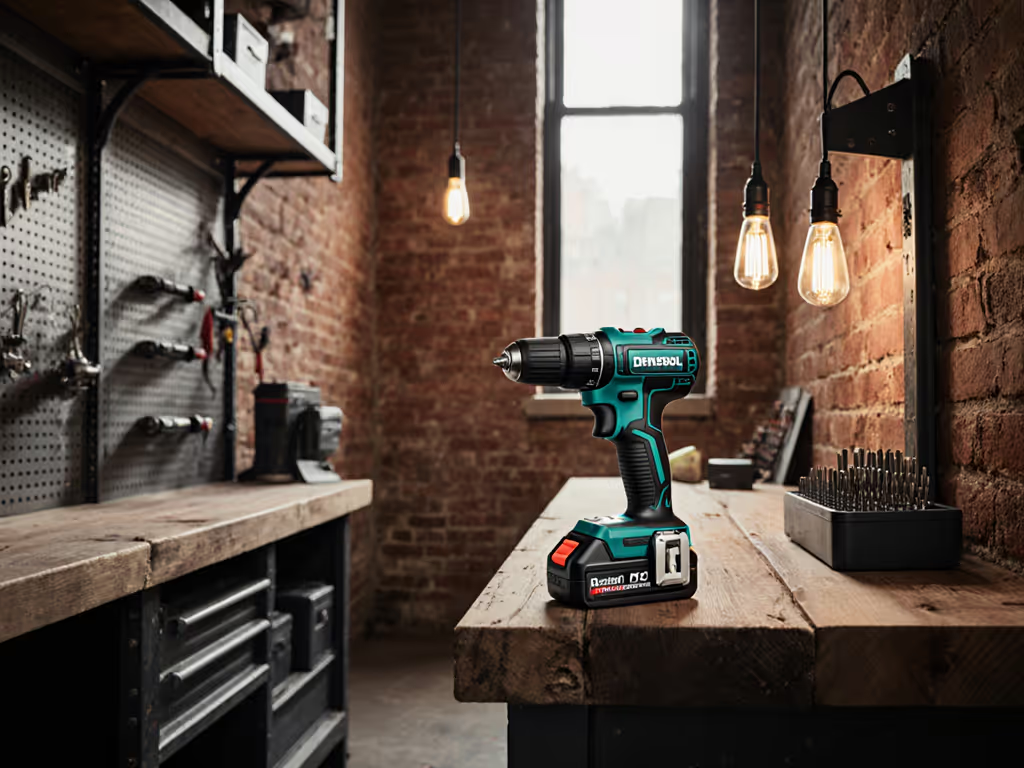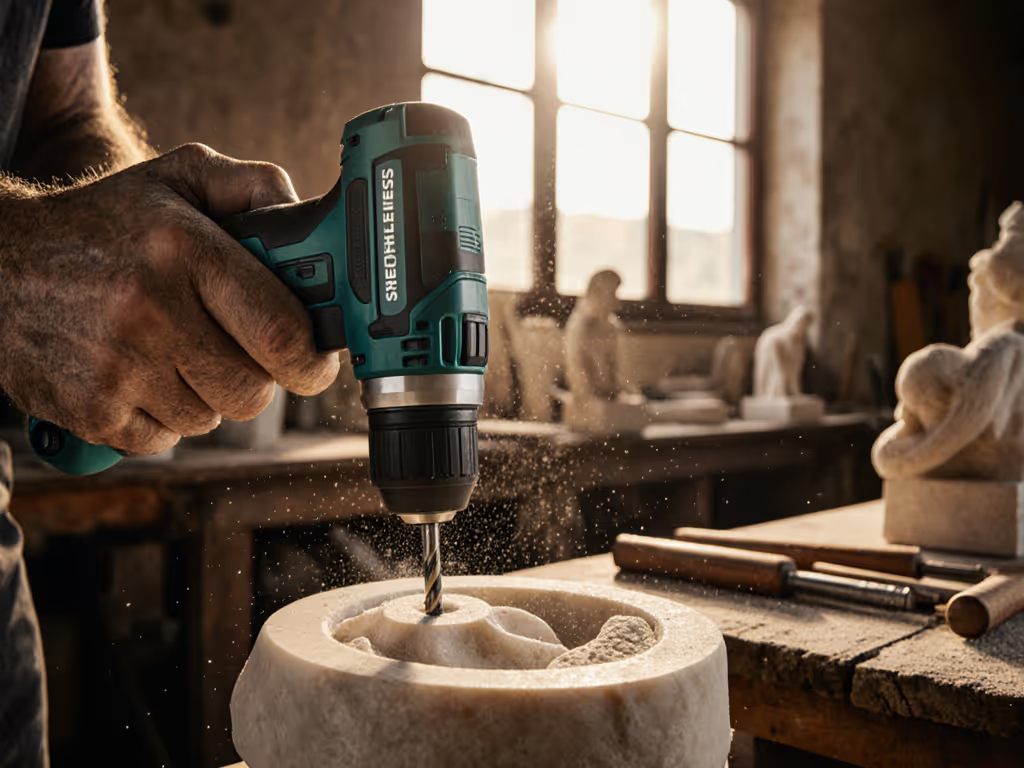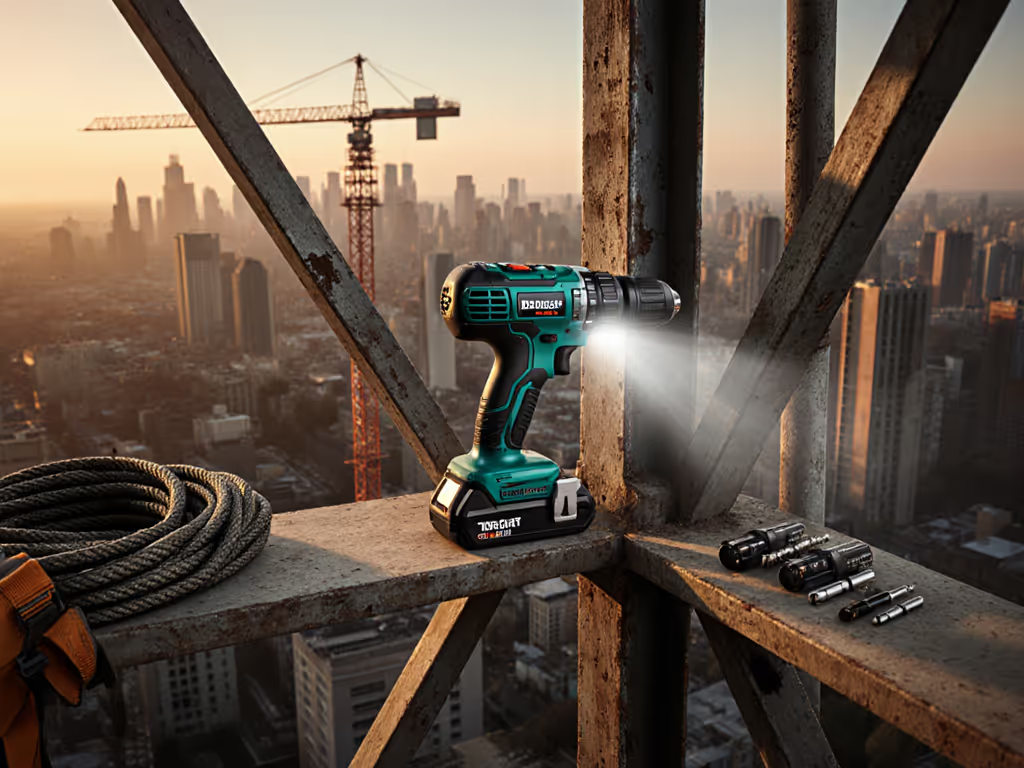
Professional Cordless Drills for Left-Handed Users: A Platform Strategy
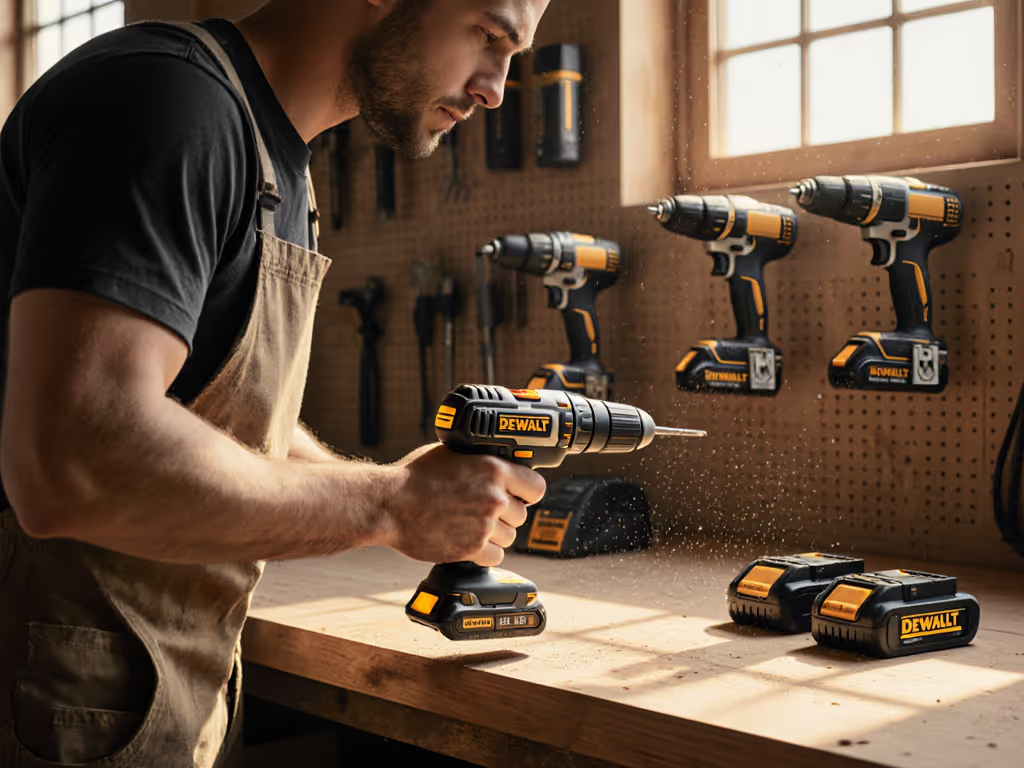
When shopping for a professional cordless drill, most left-handed users fixate on "left hand power tools" as a standalone solution, a trap that guarantees duplicate batteries and buyer's remorse. The real game-changer? Ambidextrous power tools built into a cohesive ecosystem where one platform solves grip mismatches and eliminates charger bloat. As someone who once bought a flashy combo kit (used twice!) only to borrow a neighbor's drill while my lone battery charged, I've learned: your wrist comfort matters less than the cost-per-Wh math of your entire toolkit.
The Hidden Tax of "Lefty-First" Tool Shopping
Left-handed DIYers face genuine frustrations: trigger-blocking direction switches, sawdust clouds in circular saws, and awkward bit changes. But here's the painful truth most reviews ignore: buying specialized left-handed power tools deepens the platform fragmentation problem. Imagine:
- Purchasing a "southpaw" drill with its own battery format
- Adding a right-angle drill (critical for tight spaces) on a different voltage
- Owning three chargers because no ecosystem supports cross-platform batteries
This isn't theoretical. I once calculated a client's $378 wasted on redundant batteries for "left-handed" tools they had impulsively bought. Worse, these boutique tools often sacrifice brushless efficiency for niche ergonomics, netting 30% fewer screws per charge than mainstream platforms. When a cordless right-angle drill requires its own $99 battery pack, you're paying an "ambidextrous tax" that compounds with every new tool.
Why Single-Tool "Solutions" Fail Lefties
The Festool Work App controversy reveals a deeper insight: that "left-handed switch" feature? It's not really for lefties, it's a platform flexibility perk. When you can reverse the direction switch via Bluetooth on any compatible tool (drill, impact driver, even sanders), sudden left-hand tasks become seamless. Yet most buyers miss this because they're hunting for "ergonomic design for lefties" specs rather than evaluating the entire system's adaptability.
Real value lives at the platform level, not the single tool purchase.
Isolated "lefty tools" often introduce bigger headaches:
- Battery bloat: That "ambidextrous" drill might need a proprietary 12V pack while your hammer drill uses 18V
- Charger sprawl: Each niche tool demands its own wall wart, murdering apartment workshop real estate
- Spec compromises: Boutique models frequently omit brushless motors to accommodate switch redesigns, crushing runtime
I modeled this for a carpenter who exclusively uses tools left-handed. His "lefty-specific" drill delivered 195 in-lbs torque (adequate) but only with a 1.3Ah battery. Meanwhile, a mainstream platform's Bluetooth-enabled drill provided 205 in-lbs with a 5.0Ah pack, and he could borrow his sister's impact driver battery mid-project. The cost-per-Wh math? $0.87/Wh for the platform vs. $1.42/Wh for the "lefty" tool. That gap widens when adding saws or sanders.
The Platform Strategy: Where Lefties Actually Win
Stop hunting for "left hand power tools." Start auditing platforms where all tools gain left-handed functionality through shared intelligence. For a brand-by-brand battery platform comparison, see how DeWalt, Milwaukee, and Ryobi stack up. This isn't speculation, it's unit-cost optimization.
Key Platform Filters for Ambidextrous Workflows
Apply these criteria when comparing ecosystems (I track these via street pricing databases like PowerToolHQ):
-
Bluetooth-enabled batteries (non-negotiable): Not for gimmicks. For reversing direction switches across every tool. Festool's TXS 18 example proves it: lefties can flip the switch without fumbling, but only if the platform has app connectivity. Without this, you'll buy tools twice: once for right-hand use, again for left.
-
Cost-per-Wh transparency: Calculate
battery price ÷ (Ah × 18V). Example: A $79 5.0Ah pack = $79 / 90Wh = $0.88/Wh. Anything above $1.10/Wh fails my value threshold. Track historical lows. I wait for $59 on 4.0Ah packs (0.82/Wh). -
Shared chassis across tool types: Need a cordless right-angle drill for cabinet work? Ensure it uses the same grip shell as your drill-driver. Milwaukee's M18 FUEL Compact line nails this (left-hand torque control feels identical across 12 tools). No retraining muscles.
-
Zero-bait bundles: Ignore "lefty starter kits" with 2 batteries and a charger. Buy tool-only + one high-capacity pack (5.0Ah+). Add a second pack later during Black Friday (typically 35% off). Reduces initial spend by $120 while avoiding low-capacity "starter" batteries.
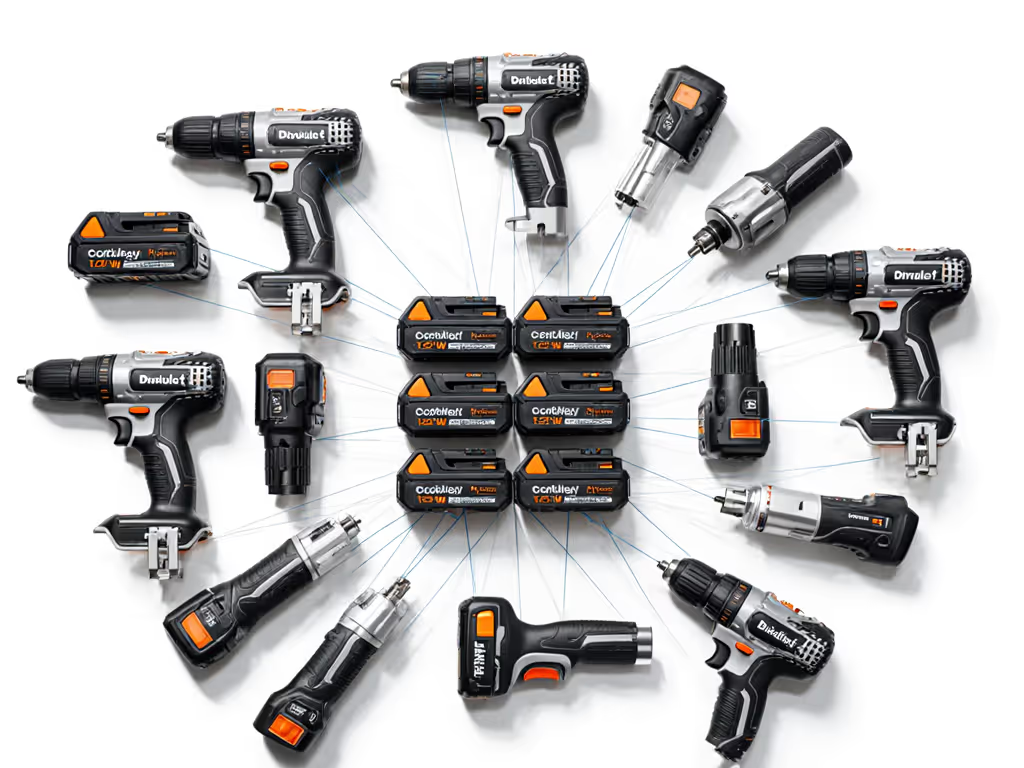
The Left-Handed Break-Even Point
I visualize platform swaps using this model: How many tools until specialty "lefty" purchases cost more than a mainstream ecosystem?
| Tool Count | "Lefty-First" Total Cost | Platform Total Cost | Savings |
|---|---|---|---|
| 1 tool | $149 | $149 | $0 |
| 2 tools | $328 ($179 battery tax) | $249 | $79 |
| 4 tools | $687 ($389 battery tax) | $499 | $188 |
At two tools, platform users save enough to buy a spare battery. By four tools, they've avoided buying 3 extra chargers and 5Ah of duplicate capacity. That's why my renovation clients report "projects stopped waiting on chargers" when switching platforms. Muscle memory transfers across tools, but only when the grip texture, trigger resistance, and battery placement stay consistent.
Your Path to Platform Freedom (Left-Handed Edition)
Don't retrofit your toolkit, rebuild it around interoperability. Here's the playbook:
Step 1: Audit Your "Lefty Pain Points"
Track exactly where right-handed bias bites you:
- Is it the direction switch protruding into your palm? → Prioritize Bluetooth-reversible platforms
- Is it sawdust in face during plunge cuts? → A worm-drive circular saw (cuts from left) solves this without platform fragmentation
- Is it thumb placement on triggers? → Look for gloved-hand grip diameters under 2.8"
Step 2: Calculate Your Break-Even Battery Count
Divide your estimated tool count by 2. If you'll own 3+ tools, only consider platforms where >80% of tools share batteries. For most, this means 18V/20V max ecosystems (DeWalt XR, Makita XGT, Festool). 12V platforms fail here (their compact drills lack Bluetooth features for switch reversal).
Step 3: Buy the Platform, Not the Momentary Spec-Sheet Thrill
That professional cordless drill with "left-handed ergonomics"? Skip it if the battery costs $1.50/Wh. Instead:
- Buy a mainstream platform's Bluetooth drill (e.g., DeWalt DCD771C2 with FLEXVOLT batteries)
- Use the app to reverse direction switches across all future tools
- Add a right-angle drill on the same platform when needed (no extra battery tax)
This is where price-to-performance meets longevity. I resold my mismatched kits at a $60 loss but saved $220/year on battery replacements. Now my Festool TXS 18 drill, CTX impact driver, and HBH cordless right-angle drill share two 5.2Ah packs. When drywalling left-handed, I flip the switch in the app, no fumbling. Cost per Wh? $0.76 after Black Friday pricing. Comfort? Consistent trigger modulation across all tools. Con? None.
Final Verdict: Platforms > Single-Tool Fixes
Left-handed users don't need special tools, they need intelligent platforms where cost-per-Wh efficiency enables true ambidexterity. Cost per Wh, then comfort, then con must be your mantra. Hunt for ecosystems offering Bluetooth-enabled battery intelligence (not "lefty editions") and shared chassis across tool types. Reject bait bundles, start with one high-capacity pack and expand during historical low-price windows. When your drill, impact driver, and right-angle drill all share batteries and reversible controls, you'll stop buying tools for your dominant hand and start building a system that adapts to any task. That's the only "southpaw tool use" strategy that pays dividends when your project hits the 3 a.m. drywall stage.


